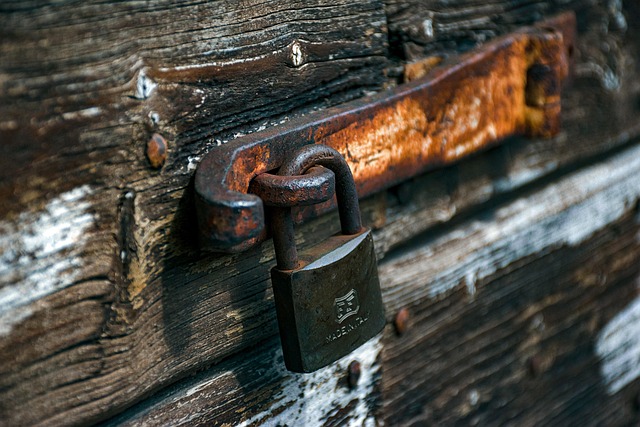Caregivers play a vital role in senior safety, especially for independent living. Medical alert systems with security features offer a comprehensive solution, providing quick emergency response and personalized health monitoring tailored to seniors' needs. These systems should feature user-friendly interfaces accessible to caregivers, integrating clear cues, simple operations, and medical alert functionality. Key components include remote monitoring, smart home integration, customizable alerts, and easy installation for both seniors and caregivers. Privacy is paramount, with secure communication, data consent controls, and regular account checks ensuring a safe living environment.
In today’s digital era, ensuring the safety and well-being of seniors is paramount. Caregivers face unique challenges in monitoring their charges’ well-being within the home. This article explores caregiver-accessible home security systems tailored for seniors, focusing on the integration of medical alert technology. We’ll delve into understanding the specific needs of this demographic, highlighting the critical role of medical alert systems in enhancing security. Key features, installation guidelines, and privacy considerations will equip caregivers with the knowledge to choose and use these life-saving tools effectively.
- Understanding the Needs of Senior Caregivers and Their Charges
- The Role of Medical Alert Systems in Home Security for Seniors
- Key Features to Look For in Caregiver-Accessible Security Systems
- Installation, Usage, and Privacy Considerations for Peace of Mind
Understanding the Needs of Senior Caregivers and Their Charges

Caregivers play a vital role in ensuring the safety and well-being of seniors, especially those living independently at home. Understanding their unique needs is essential when designing or recommending solutions like medical alert systems with security features. Senior caregivers often face challenges such as age-related mobility issues, cognitive impairments, or reduced vision and hearing, which can impact their ability to respond swiftly in an emergency.
Therefore, a caregiver-accessible home security system should be user-friendly, offering simple interfaces and clear visual or auditory cues for easy operation. These systems should also integrate medical alert functionality, allowing seniors to quickly notify emergency services or caregivers in case of falls, medical emergencies, or when assistance is needed. By combining security with medical alert capabilities, such systems empower both the senior and their caregiver, promoting a safer living environment.
The Role of Medical Alert Systems in Home Security for Seniors

Medical alert systems play a pivotal role in enhancing home security for seniors, offering peace of mind and rapid assistance during emergencies. These innovative devices go beyond traditional security measures by integrating vital health monitoring features tailored to the unique needs of older adults. With a simple press of a button, seniors can connect with emergency services, ensuring quick response times and effective crisis management.
The integration of medical alert systems within home security frameworks provides a comprehensive solution. They are designed to detect falls, monitor vital signs, and track daily routines, allowing caregivers or family members to remotely assess the well-being of their loved ones. This technology not only safeguards seniors from physical hazards but also provides an early warning system for potential health crises, ultimately contributing to improved safety and quality of life.
Key Features to Look For in Caregiver-Accessible Security Systems

When choosing a caregiver-accessible home security system, look for solutions that combine ease of use with robust features. Key components include medical alert systems with security functionalities, allowing seniors to quickly access help in emergencies. These systems often feature simple, intuitive interfaces designed for users with varying levels of mobility and cognitive abilities.
Additionally, consider systems with remote monitoring capabilities, allowing caregivers to check in on their loved ones from anywhere. Integration with smart home devices, such as voice assistants and automated lighting, can also enhance safety by enabling voice-activated alerts and ensuring a comfortable living environment. Look for products that offer customizable alerts and notifications to tailor the system to individual needs.
Installation, Usage, and Privacy Considerations for Peace of Mind

The installation process for caregiver-accessible home security systems, including medical alert devices, is designed to be user-friendly and adaptable to various needs and abilities. These systems often come with detailed guides and can be set up by the senior themselves or with minimal assistance from a family member or caregiver. Many modern medical alert systems with security features are equipped with simple interfaces, allowing users to easily activate alerts, manage contacts, and adjust settings.
Privacy is a paramount concern when considering these systems. Senior citizens and their caregivers should review and understand the privacy policies of the service provider to ensure secure data handling. Features such as encrypted communication, consent control over data sharing, and clear opt-out options are essential for maintaining peace of mind. Regular checks on account settings and keeping software updated help protect personal information and ensure smooth operation of the security system, promoting a safe and comfortable living environment.
Caregiver-accessible home security systems, integrated with medical alert capabilities, offer a comprehensive solution for ensuring the safety and well-being of seniors. By understanding the unique needs of both caregivers and their charges, we can implement systems that not only prevent accidents and emergencies but also provide peace of mind. Medical alert systems serve as lifelines, enabling timely assistance during critical situations, while security features safeguard homes from potential threats. With the right features and careful consideration of installation, usage, and privacy, these systems become essential tools for enhancing senior living, allowing them to maintain independence with added assurance.
